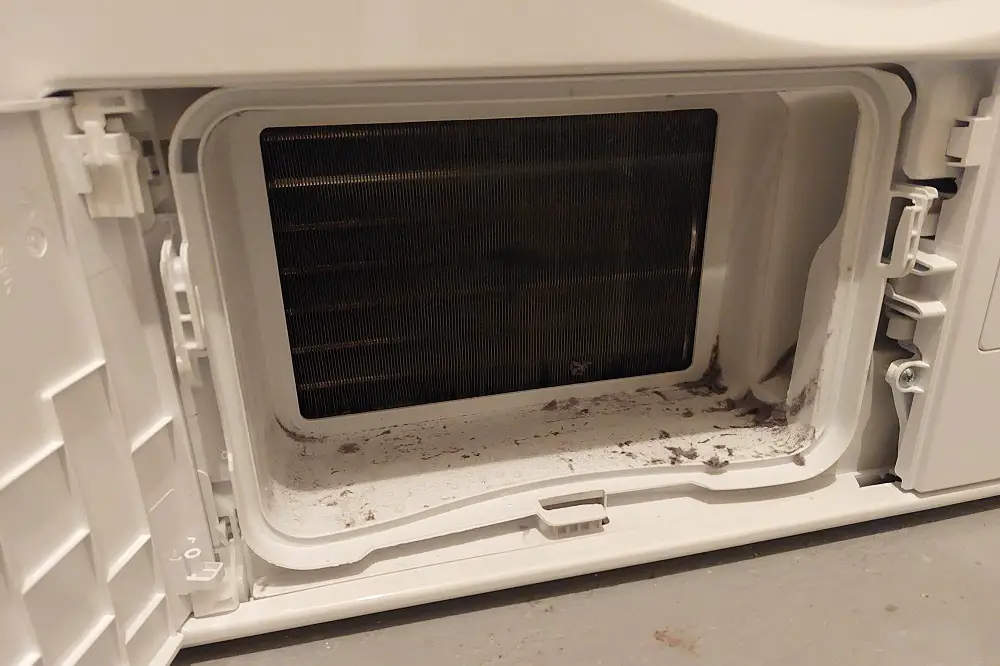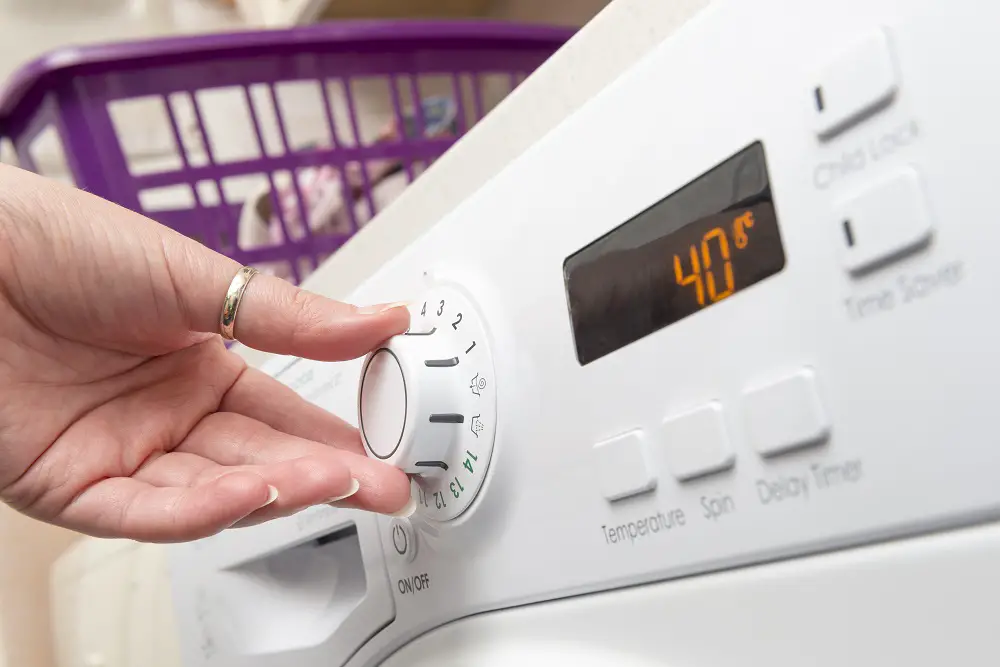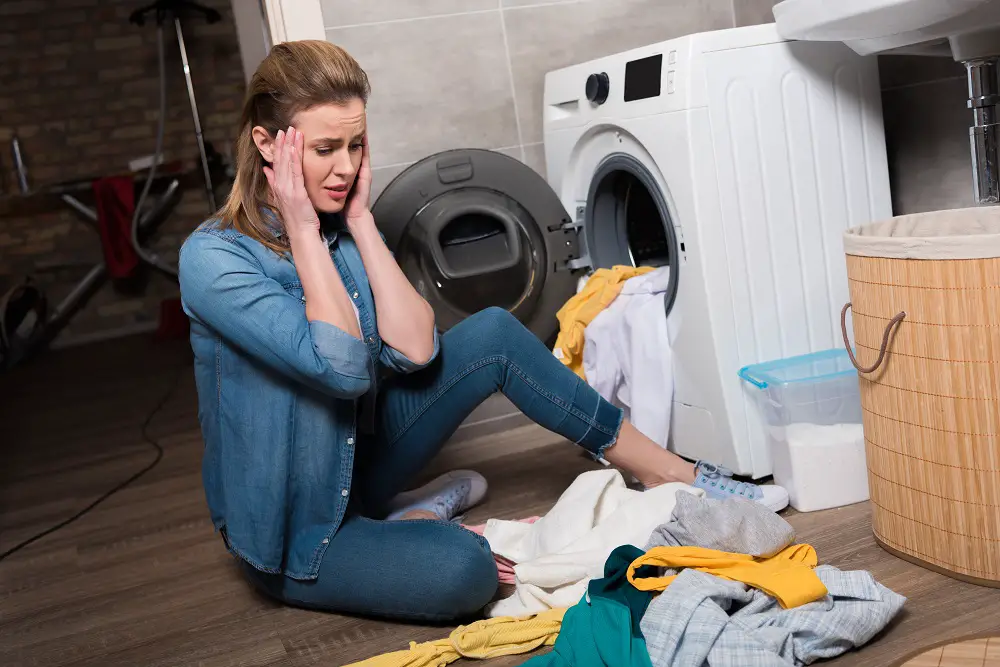A tumble dryer can be equipped with an internal condenser or expel the vapor through a vent outside the house.
The condenser dryer cools the hot moist air produced by your dryer in a condenser box and collects the water in a container.
The vented dryer blows the moist air out directly of the building via tubes. These vents are usually permanent but can be replaced by an external condenser box attached to the outgoing tube.
Tumble dryers with a heat pump are condenser dryers with an additional cycle to reuse the hot air. These dryers are more energy efficient but the condenser boxes are often not removable.
The rest of this article will explore the different types in detail as well as the benefits and cons. We will also discover why you shouldn’t use an external condenser box for vented dryers. So keep reading!
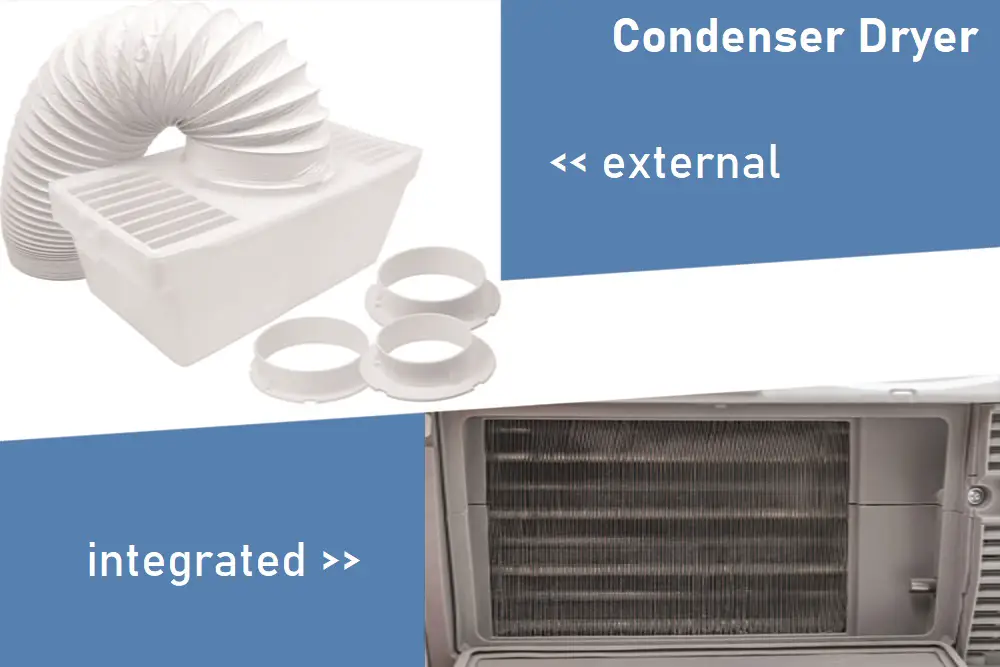
Table of Contents
How condenser boxes work
The drying process is quite simple heating up air from the vicinity and blowing it into the drum. The laundry will permanently be circulated in this procedure to ensure the hot air gets to all parts of the wet clothes.
Heating up the air strongly reduces the relative humidity and allows the excess water to leave the clothes and vapor into the air.
The result is hot moist air and dry clothes.
Water from this air will be expelled through vents or dried by using a condenser box.
The primary purpose of this box is to cool down the moist air. This results in an increasing humidity reaching its maximum (100 %). Excessive water will condensate beyond this point and water drops develop.
They will be collected in the condenser box and removed manually or by a connected vent.
In general, there are 2 different types of condenser boxes:
- Condenser dryer with an integrated condenser box
- Vented dryer with an external condenser box (added to remove the vent)
Depending on the actual type the box works slightly differently.
Condenser Boxes in a Condenser Dryer
Most of the current tumble dryers are condenser dryers. These machines have been improved in recent years and are now standard when buying a dryer. The advantages of condenser dryers have outranked the vented dryers.
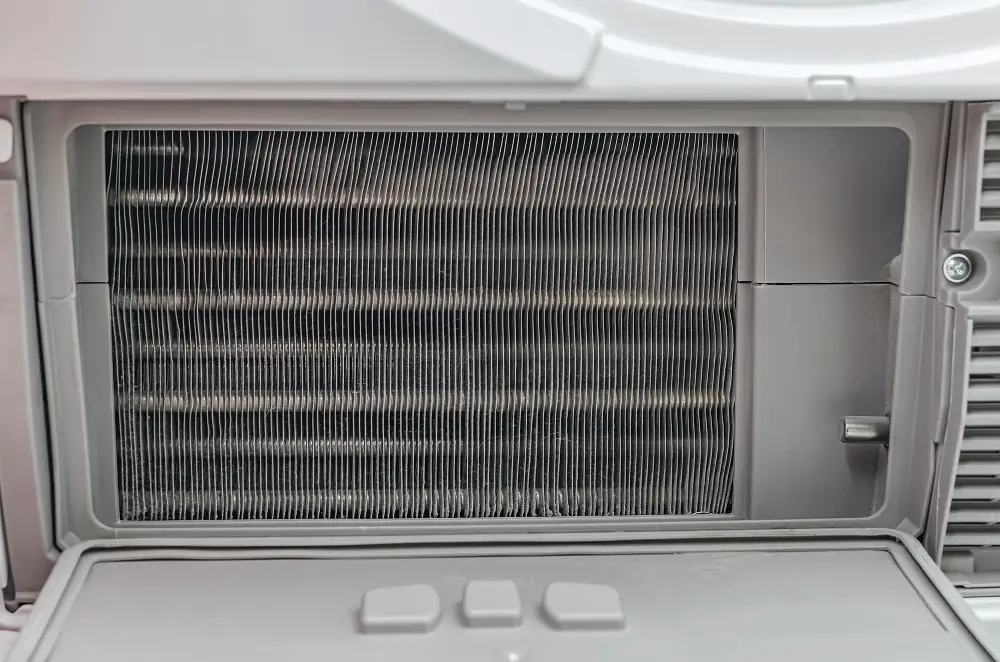
- No installation of vents is necessary
- Placement in every room possible
- Higher energy efficiency (especially with a heat pump – standard today)
The condenser box is located in the bottom part of the machine and can be accessed through a lid in the front. It usually can be removed and inspected without any tools.
It consists of a heat exchanger that is made of metal slats. The air is cooled down on the cold surface of the metal and water drops into a container.
Condenser Dryer with a Heat Pump
The current tumble dryer models are using a second heat cycle to reuse the hot air and save energy.
This improvement also comes with a downside. Condenser boxes are now combined with the heat pump resulting in more complex construction. These parts are often not removable anymore.
Cleaning or inspecting the condenser box is impossible in this case.
Condenser Boxes Added To A Vented Dryer
The alternative to a condenser dryer is a device that expels moist air via vents out of the building. The tubes are permanently installed between the dryer and the exhaust vent.
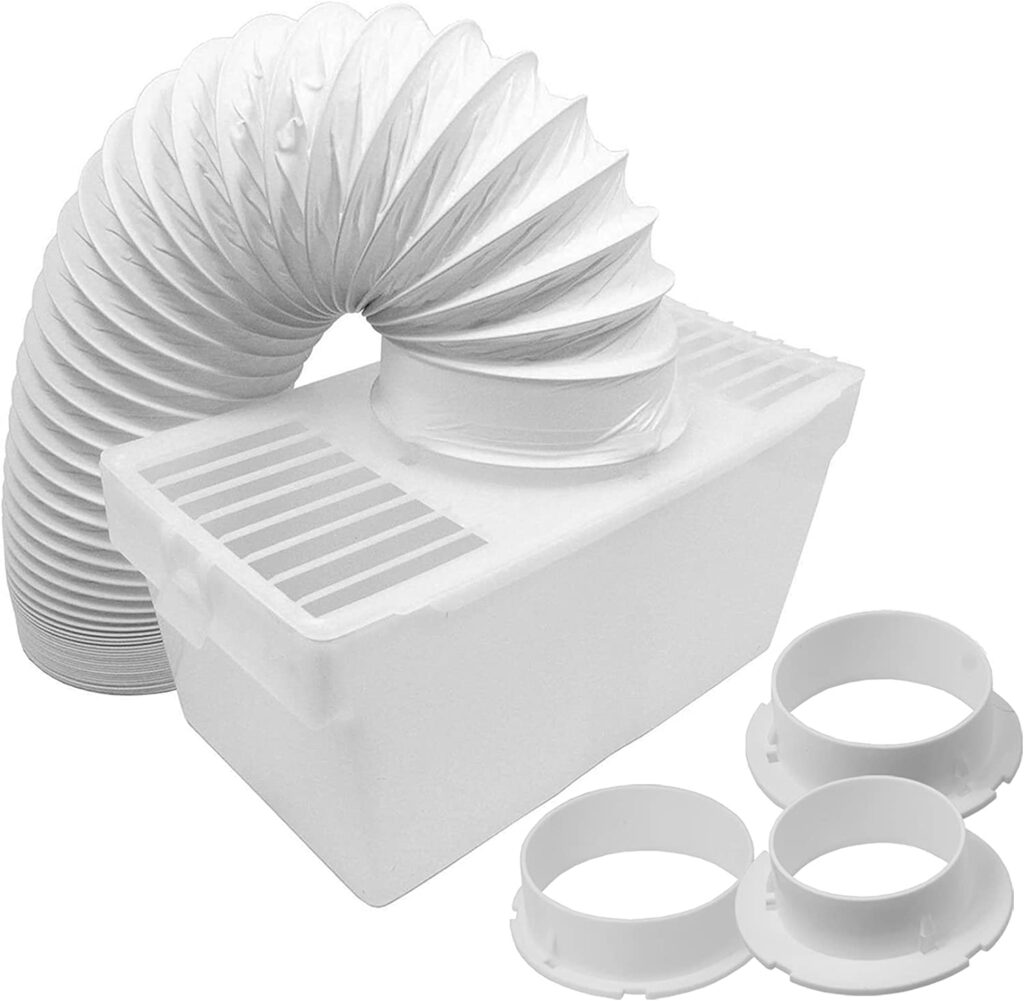
This can be a decisive difference and make those dryers very unhandy. They are harder to install and not easy to replace if necessary.
To overcome this disadvantage it is possible to connect the exhaust pipe with an external condenser box.
To use a condenser box for a tumble dryer, connect the vent hose to the tumble dryer outlet and the alternate end of the hose to the condenser box. Then add cold water or ice to half fill the box. This will reduce the temperature of hot moist air and condensate the water.
As long as enough cold water is in the condenser boy and it is not yet filled with water the box will work to remove water from the hot moist air.
Missing hot water or a filled box will impede the correct function and result in moist air filling the room or water running out of the box.
Those boxes have to be filled up every time with cool water and emptied from the condensed liquid.
Benefits of external condenser boxes
Using an external condenser box for a vented dryer has 2 benefits that seem to make it a good option:
- You can place your tumble dryer anywhere in the house
- You don’t need to drill holes in your wall
1. You can place your tumble dryer anywhere in the house
With a condenser box, your tumble dryer is a self-sustaining unit.
It doesn’t require any outside help other than a power outlet. So there’s only one thing to consider when deciding where to place it: what place is most convenient for you?
Dryers with vents need to be placed in areas where you can easily drain out their water. This includes places with windows, drains, holes in walls, etc. You wouldn’t need to worry about any of those things with a working condenser box.
2. You don’t need to drill holes in your wall
A huge benefit of using condenser boxes is that you don’t have to make holes in your wall.
With vented dryers, you need to have an access point to the outside world.
If you’re living in an apartment, leasing out your house, or living with someone else, you may not be able to make holes in walls.
In such a case, having a condenser box seems to be the solution.
Don’t Use An External Condenser Box – Here’s Why
External condenser boxes are not recommended, because they are not efficient, not easy to install, laborious to apply and come with the risk of uncontrolled moisture or even flooding.
There are several aspects why condenser boxes should not be used on a vented dryer:
- Lacking efficiency
Vented tumble dryers are designed to remove the moisture through a vent. Any additional tool won’t be sufficiently effective. There is too much moisture for this passive box to be removed. The cooling water will heat up and the condensing will decrease. The room will heat up and become damp. - Hard to install
There are no official condenser boxes provided by the manufacturer. Tools are made by 3rd parties and come with a design to fit all dryers. While some work better than others they are often hard to install without any are leaving the system unintended. - Limited capability
External condenser dryers can only hold as much water as the big container. This limits the maximum amount of removed water and can become a problem when using very damp clothes or forgetting to empty them. - Risk of uncontrolled moisture
The limited container size and need for enough cool water is a risk without a safety net because the dryer doesn’t have any logic that recognizes a problem with the condenser box. It will continue to blow hot moist air into the box (or room) as long as it dries.
Any misfunction of the box will result in a damp room or even flooding in the area of the condenser box. - Not allowed by the manufacturer
To keep the appliance of tumble dryers safe and effective you have to stick to the manual and use official parts. No manufacturer offers such boxes. Additionally, every manual states that you have to use the official vents (in a specific manner). - Not allowed by IRC
The International Residential Code (IRC) gives recommendations often followed by an associated law. It states that only approved ductless models can refrain from venting to the outside.
The consideration indicates clearly that external condenser boxes are not an alternative and should be avoided.
External Condenser Box – The Best Alternative
Having a vented dryer does come with some disadvantages. If you own one and need to move it, you should consider those aspects and only give it a new place if safe venting is possible.
Considering Buying a new dryer gives you the choice to take advantage of the better comfort and less energy usage of condenser dryers (and even more so with a heat pump).
Those dryers may have a slightly higher price than vented dryers, but it pays out during the lifetime easily when taking the energy cost into account.
The best alternative for any vented dryer is a model with a heat pump.
You should look out for special offers and sales in your neighborhood and online. Tumble dryers can vary in price a bit and patience can pay out.
Tumble dryers are also less expensive in the hot season because people do have the alternative to air dry clothes. Winter makes it hard and increases the need for a dryer. More people are buying and prices rise.
Condenser box leakages and how to overcome
Poor quality condenser boxes that don’t come with a vent/hose can often have leakages.
When these boxes leak moisture things like walls, the floor, and nearby objects can get damp which leads to mold growth.
Why is water coming from under my condenser box?
Condenser boxes don’t have vents draining water outside your house. They only have a relatively small container. Once that fills, water can start leaking and damaging the surfaces near it. This is the most common cause of condenser box leakages.
How do I fix condensation in my dryer?
Check your condenser tank. If it has a lot of water, empty it. You’ll be able to see if it is leaking. Then inspect your pumps and hoses. If a faulty pump is causing water leakage, you can check it for continuity and then replace it if necessary.
FAQ Section
What does a tumble dryer condenser box do?
It channels hot air into a container where it is condensed and stored. These boxes can be integrated into a condenser dryer or externally connected to a vented dryer. Such additional fittings are ineffective and should be avoided. You should prefer to buy a condenser dryer with a heat pump.
Where does the water go in a condenser tumble dryer?
The water goes into a container called a reservoir which may be located within or outside your dryer depending on what model you have. This tank collects water. You have to empty it once it’s full. The container can be vented to a drain which makes the manual emptying obsolete.
How do dryer vent boxes work?
Commonly confused with condenser tumble dryers, dryer vents remove excess heat generated during the dryer cycle in order to prevent indoor fires. They are not the same thing as condenser boxes since they remove hot and moist air.
